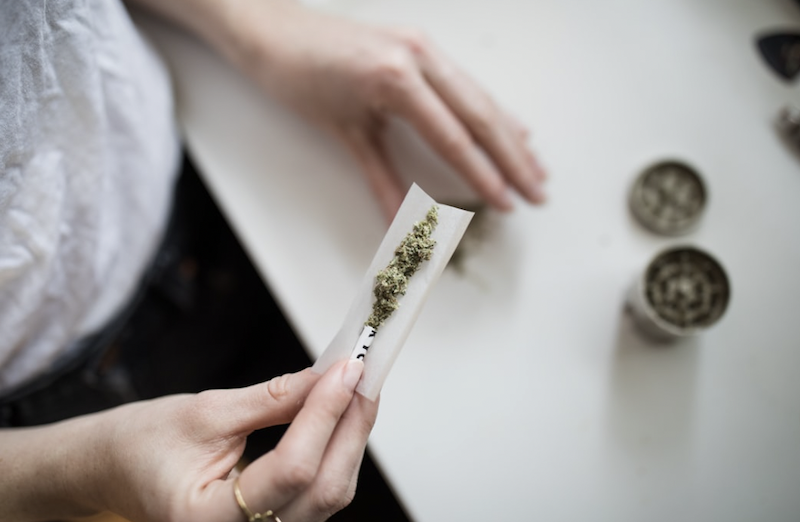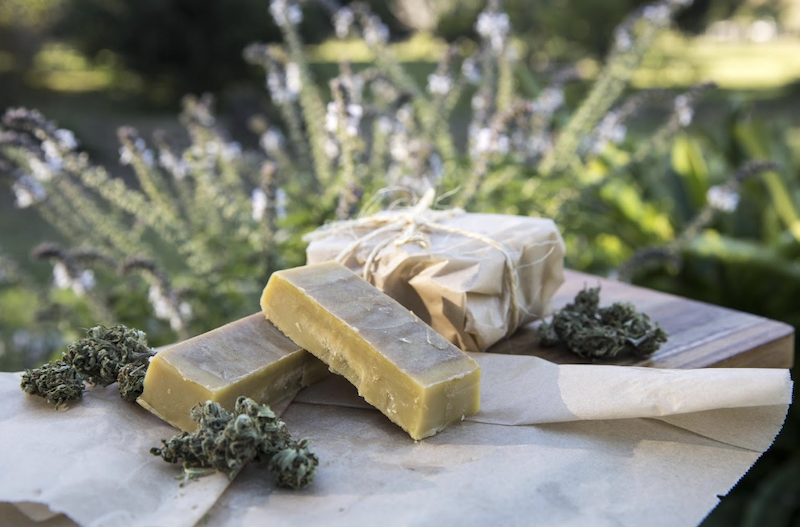Cannabis, a plant that has sparked both curiosity and controversy, has been utilized for thousands of years in various cultures for its therapeutic and recreational properties. As society’s understanding and acceptance of cannabis continue to evolve, it becomes increasingly important to demystify this complex herb.
Whether you are a seasoned user, a curious newcomer, or someone seeking to understand its medical potential, this resource will equip you with the knowledge needed to navigate the world of cannabis with confidence and insight. Join us as we delve into the fascinating journey of cannabis and uncover the truths that lie within.
Image source: https://unsplash.com/photos/person-making-cannabis-joint-UoXLndT32Hg
The History of Cannabis
The history of cannabis is rich and varied, tracing back over 5,000 years to ancient civilizations. In regions like China and India, it was revered for its psychoactive properties and its medicinal benefits, being used to treat ailments such as pain and anxiety. As cultures exchanged knowledge along trade routes, cannabis found its way into religious ceremonies and local traditions, solidifying its place in human history.
The narrative took a dramatic turn in the 20th century when stigmatization and prohibition swept across the globe, overshadowing its long-standing heritage. Today, as the tide shifts once again towards legalization and acceptance, it is essential to revisit cannabis’s past to appreciate its potential in shaping both medicine and culture in the modern age.
Cannabis Strains and Their Effects
Cannabis strains are diverse, each exhibiting unique characteristics and effects influenced by their genetic profiles. Generally categorized into three primary types—Indica, Sativa, and Hybrid—these strains cater to different preferences and needs. Indica strains, like the popular Super Runtz weed strain, are often associated with relaxation and sedation, ideal for evening use or as a remedy for insomnia. Conversely, Sativa strains tend to provide uplifting and energizing effects, suitable for social settings or creative endeavors. Hybrids, blending both Indica and Sativa qualities, offer a balanced experience. Once you have a better knowledge of how cannabis strains work, it will be easier to determine which one best suits your needs.
The Role of Cannabinoids and Terpenes
Cannabinoids and terpenes are the compounds responsible for the various effects produced by different cannabis strains. THC (tetrahydrocannabinol) is the most well-known cannabinoid, known for its psychoactive properties; however, there are over 100 other cannabinoids present in cannabis that contribute to its therapeutic potential. CBD (cannabidiol), for example, has gained popularity in recent years for its ability to alleviate pain, anxiety, and inflammation without causing a high.
Terpenes are aromatic compounds found in plants that give each strain its distinct smell and taste. They also play a role in the effects of cannabis, with some terpenes promoting relaxation while others enhance focus or creativity.
Consumption Methods
There are various ways to consume cannabis, each with its unique benefits and drawbacks. Let’s take a closer look at some of the most popular methods:
- Smoking: The traditional method of cannabis consumption involves inhaling smoke from dried flowers through a pipe, joint, or bong. This method provides quick and potent effects but can be harsh on the lungs.
- Vaporization: Similar to smoking, vaporization involves heating the cannabis without combustion to produce a vapor that is inhaled. This method reduces the risk of harmful toxins while still providing fast-acting effects.
- Edibles: These are food products infused with cannabis extract, providing a longer-lasting high but with delayed onset and varying potency levels.
- Topicals: Cannabis-infused lotions, oils, and balms can be applied directly to the skin for localized relief from pain and inflammation.
The consumption method you choose will depend on your personal preferences and needs, so it’s essential to explore and experiment with different options.
Medicinal Uses of Cannabis
The medicinal uses of cannabis have garnered considerable attention, particularly in recent years as research continues to uncover its therapeutic potential. Cannabis may help manage various medical conditions, including chronic pain, epilepsy, multiple sclerosis, and mental health disorders such as PTSD and anxiety.
The cannabinoids present in the plant interact with the body’s endocannabinoid system, potentially providing relief from symptoms and improving overall well-being. Patients often prefer cannabis over traditional pharmaceuticals due to its natural origins and fewer side effects. As more states and countries embrace legalization, ongoing clinical trials and studies aim to further validate and expand our understanding of cannabis as a viable treatment option for diverse health concerns.
Legal Status and Regulations
The legal status and regulations surrounding cannabis vary significantly around the world, reflecting a complex interplay of cultural attitudes, political landscapes, and medical research. In some regions, cannabis has been fully legalized for both medicinal and recreational use, allowing adults to enjoy its benefits without legal repercussions. Other areas maintain strict prohibitions, relegating cannabis to the shadows and stigmatizing its use.
As more evidence emerges regarding its safety and efficacy, advocacy for reform grows stronger. Patients, lawmakers, and public health officials are increasingly recognizing the need for updated regulations that reflect current scientific understandings and prioritize health, safety, and personal freedom. The journey toward comprehensive cannabis reform is ongoing and vital.
Cultivation Techniques
Cultivating cannabis requires a careful balance of environmental factors and techniques to achieve optimal growth and yield. Indoor cultivation allows for greater control over variables like light, humidity, and temperature, enabling growers to create the perfect conditions for their plants. Outdoor grows benefit from natural sunlight and the earth’s resources, but require proper planning to guard against pests and weather challenges. Key cultivation techniques include:
- Lighting: Ensuring adequate light levels is essential for healthy plant growth. Indoor growers may use high-intensity lamps, while outdoor cultivation relies on the sun.
- Nutrients: Cannabis plants require specific nutrients, such as nitrogen and phosphorus, to thrive. These can be added through fertilizers or natural composting methods.
- Pruning and Training: Controlling the size and shape of cannabis plants can optimize their exposure to light and increase yields. Techniques like topping, bending, and trellising are commonly used.
- Harvesting and Curing: Properly harvesting and curing cannabis ensures the best flavor, potency, and longevity of the plant. This involves trimming off excess foliage, drying the buds, and storing them in a controlled environment.
Working with experienced cultivators or researching proven techniques can help novice growers achieve success in their cannabis gardens.
Image source: https://pixabay.com/photos/butter-cannabis-edibles-cannabutter-6622629/
The journey through the world of cannabis reveals a complex plant with a diverse history, myriad strains, and significant medicinal potential. As societal attitudes shift and research continues to expand our understanding of its benefits and applications, cannabis stands at the forefront of modern health discussions and cultural exploration.
Embracing the knowledge gained from past experiences, along with recent scientific advancements, will empower individuals to make informed decisions regarding cannabis use. The future holds promise for personal wellness and a broader redefinition of ca




















